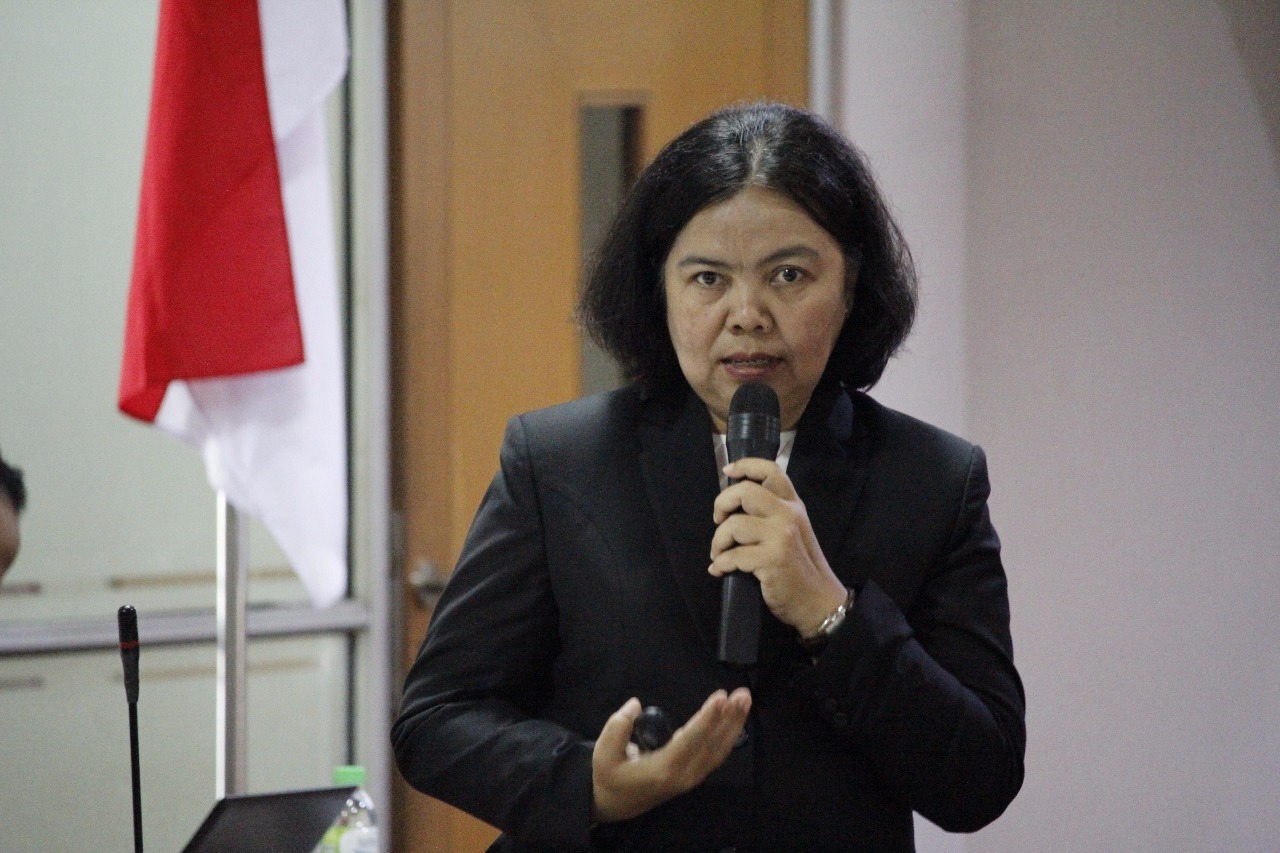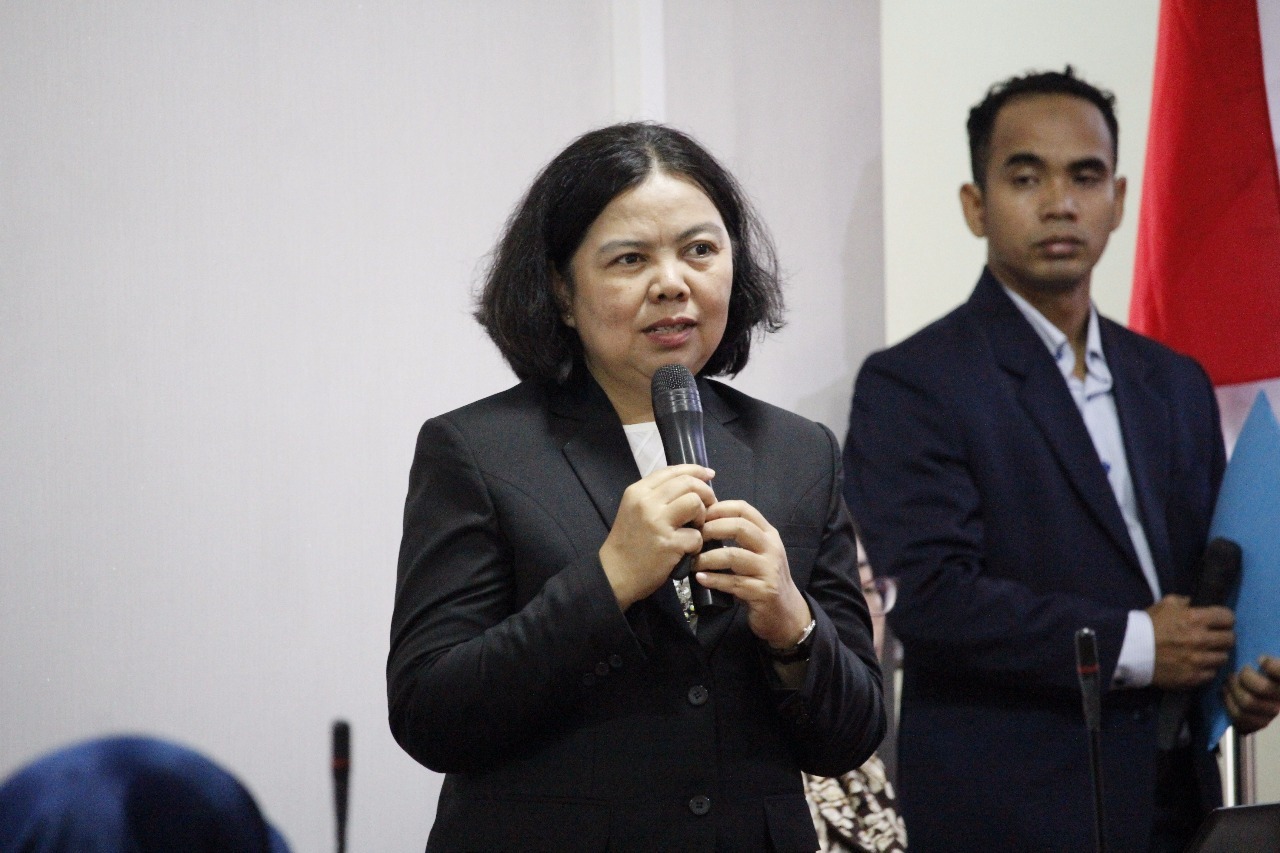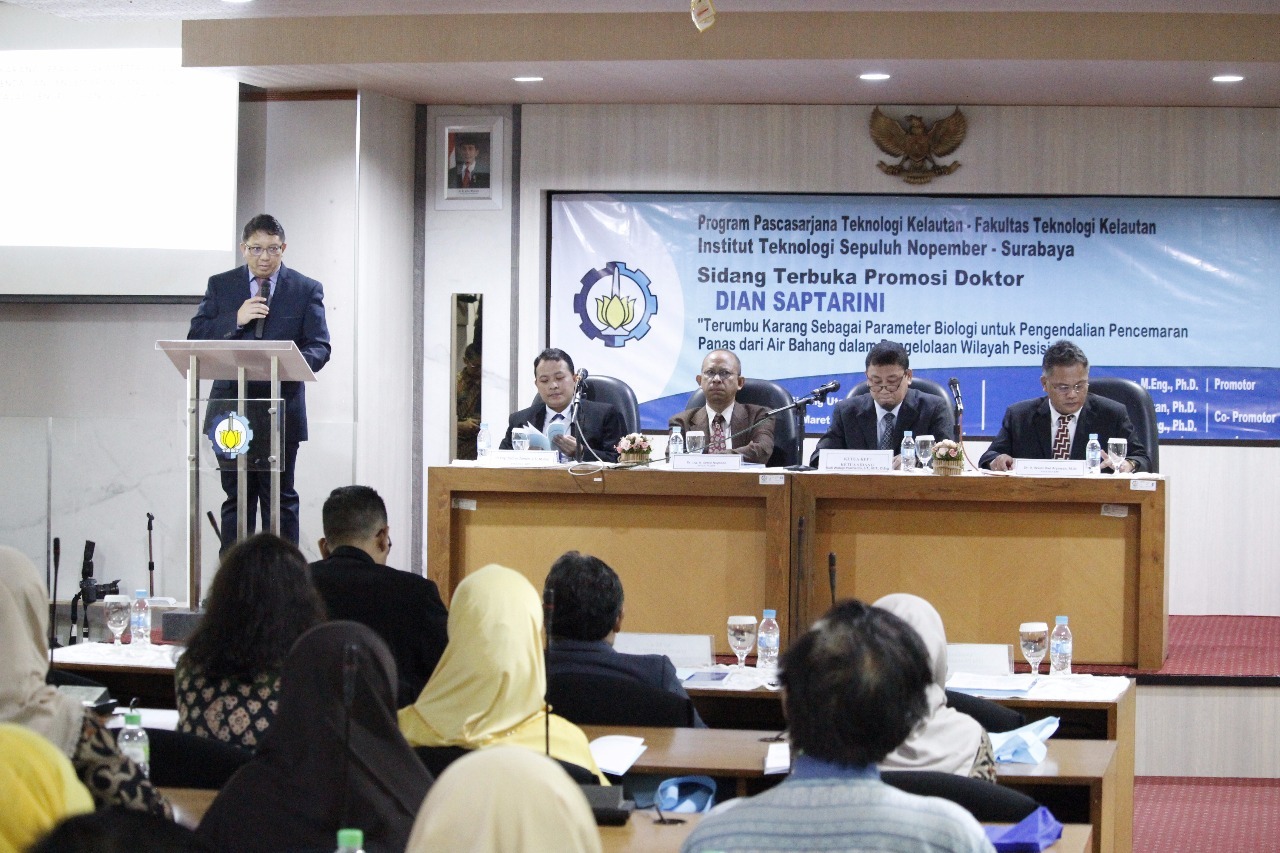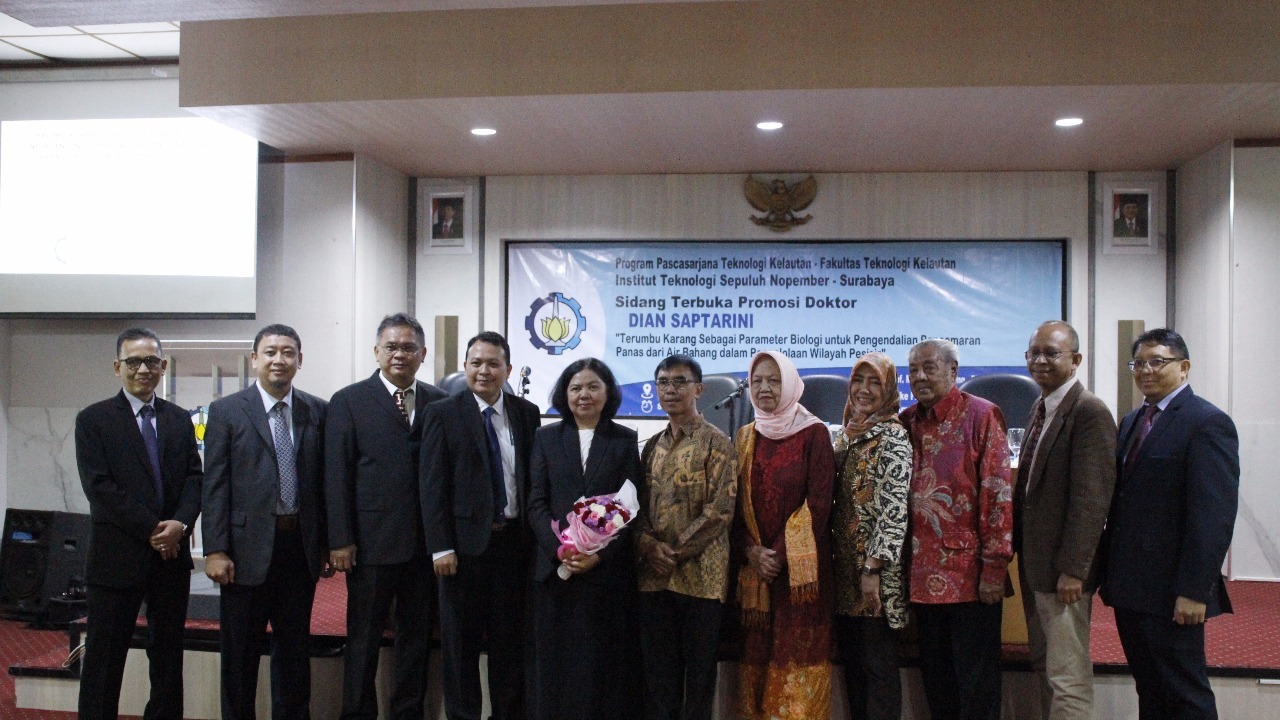Research of Coral Reefs as Bioindicators of Heat Pollution

Dian Saptarini while presenting her dissertation material in the Open Session of Doctoral Promotion at ITS
ITS Campus, ITS News – Disposal of hot water from industrial activities to coastal areas contributes to rising water temperatures on the coast that can damage coral reefs. Departing from this, Dr. Dra Dian Saptarini MSc examines coral reefs as a biological parameter for the control of heat pollution.
The research for the dissertation was presented in the Open Session of Doctoral Program of the Faculty of Marine Technology (FTK) of Institut Teknologi Sepuluh Nopember (ITS) in the Main Meeting Room of the ITS Rectorate Building, Monday (11/3).
Indonesia is geographically located in a tropical climate, said Dian, so that Indonesia has abundant biodiversity in the coastal areas. On the other hand, coastal areas are widely used in developing regions and activities, one of which is industrial activities. Some industries use seawater as raw material for engine cooling water and release high-temperature cooling water to coastal waters.

Dian Saptarini (left) when presenting her dissertation material in the Open Session of Doctoral Promotion at ITS
Heat water is seawater that has been used in the process of cooling the engine which is thrown back into the sea. Disposal of hot water aside from industry also comes from electric steam power plants (PLTU). High energy requirements lead to the construction of massive power plants in Indonesia. “Today, Indonesia already has around 37 electric steam power plants, and there is a possibility to increase,” said the woman who is also a lecturer in Biology at ITS.
According to previous studies, continued Dian, coral is very sensitive to temperature changes. “Therefore, the use of coral reefs as a biological parameter for heat pollution has been studied, so that an approach can be developed that integrates the effect of increasing temperature and coral damage in the stages of coastal water disposal management,” explained the woman who is also the coordinator of the ITS Smart Eco Campus program.
According to Dian, coral can be analogous to the tropical rainforest of the sea or ocean forest. The role of corals for the earth is the same as the role of tropical rainforests, namely as a place to live and breed marine biota, the ability to absorb carbon, and coral bleaching.
Coral bleaching is the process of coral’s color to disappeared into white caused by the degradation of the population of zooxanthellae which is symbiotic with coral. This degradation causes corals to die and their function in reducing carbon emissions, and the living and breeding of marine biota is lost.
From her research, Dian identified variations in the composition of corals based on their adaptive properties in waters that experienced temperature increases and not. Corals in areas that experience an increase in temperature due to hot water are dominated by corals with adaptive stress-tolerant properties possessed by massive corals, whereas corals in waters with optimum temperatures have a coral composition of adaptive stress tolerator types, missiles, and competitors. One of the ruderal coral species is branching coral.

The atmosphere of the Open Doctoral Promotion with promovenda Dian Saptarini
From these observations, it can be concluded that the existence of different characteristics of corals explains different environmental information. With further research, Dian found that the increase in temperature that can be tolerated by corals was approximately 2.3 ℃ from the upper limit of the environmental / temperature parameters. “The ideal temperature for growing corals is 26 – 30 ℃, with an ecological threshold that can be tolerated for optimum growth is 32 ℃,” she said.
At the end of his presentation, Dian revealed that the results of her research were universally valid, although they were still limited to tropical areas. Besides that, there are still many things that can be developed to complement this research. Dian said topics such as how corals can adapt to environmental changes or coral development phases are some examples of topics that can be investigated to complement these findings.

Dian Saptarini (carrying a bouquet of flowers) with family and colleagues after the doctoral session
Dian said the high energy demand in Indonesia is one of the causes of the massive discharge of hot water. By knowing the coral ecology threshold, she hopes that the development to meet energy needs in the future is not just building. “But also interpreting where we are building, and what impacts can occur due to the development,” concluded Dian. (RAM / Anjani / ITS Public Relation Officer)
Related News
-
Anticipating Lost Pet Dogs, ITS Students Invent a Tracking Bag
ITS Campus, ITS News —Losing a pet is a sad thing for its owners. To anticipate this, a team
March 15, 2019 18:03 -
ITS Students Integrate Smart City Service Features Through Visionaries
ITS Campus, ITS News — Institut Teknologi Sepuluh Nopember (ITS) continues to prove itself as a home for talented
March 15, 2019 18:03 -
ITS Students Innovate Eco-Quake Building Concept
ITS Campus, ITS News — Along with the development of technology, the construction sector has also experienced rapid growth
March 15, 2019 18:03 -
Great, ITS Successfully Becomes Overall Champion of the 2024 Indonesian Ship Contest
ITS Campus, ITS News — Proving itself as a home for champions, Institut Teknologi Sepuluh Nopember (ITS) managed to
March 15, 2019 18:03
